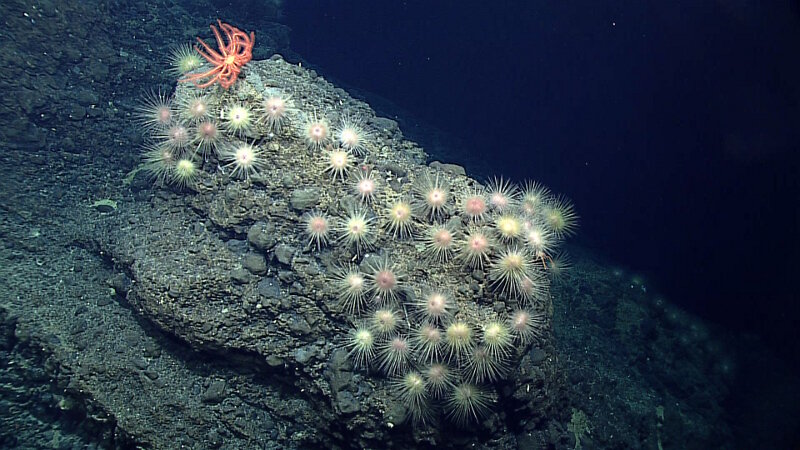Dive 18 took place on the outer slope of the Esmeralda Seamount, a submarine volcanic complex to the west of Saipan. The location we dove on, an extinct part of the volcano, is of interest to NOAA Fisheries because there is significant bottom fishing occurring in this area. We began our dive at 520 meters and transited up the slope of the bank. Between 450-500 meters, we saw some of the highest density communities of corals and sponges of the expedition. There were also high numbers of urchins in this area. We saw a significant shift in the geology during the course of the dive, from volcanics at the beginning to karstic carbonate rocks that may have been old coral reefs toward the end. We saw a number of animals on this dive that we hadn't yet seen on the expedition, including a very abundant tubular sponge (Psilocalyx wilsoni), a slit shell gastropod (Pleurotomariidae; part of an ancient lineage referred to as a "living fossil"), onaga (Etelis coruscans) – the most important fishery species in the region, and a nudibranch. The jelly-nose eel (Guentherus katoi) and the guyot butterflyfish (Prognathodes guyotensis) may both be new records for the area. We also encountered many deepwater cardinalfish (Epigonis); roughies (Hoplostethus); boarfishes (Antigonia); a bright orange batfish (Halieutaea stellate); an Ornate Jobfish (Pristipomoides argyrogrammicus); many of the small, colorful Odontanthias; and a tonguefish. We collected a demosponge that had a high number of commensals living on it, and a chrysogorgid coral with lots of comb jellies (ctenophores) attached to the polyps and zoanthids lining the stalk. Just before leaving the bottom, small schools of pelagic dogtooth tuna (Gymnosarda unicolor) and jacks swam by.
